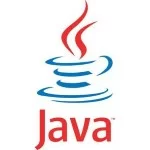Chaos Engineering for Java: Testing Spring Boot Resilience with Gremlin & Litmus
Modern distributed systems must withstand failures—network delays, crashes, and infrastructure outages. Chaos Engineering proactively tests system resilience by injecting controlled failures in production or staging environments. For Java applications, Spring Boot is a prime candidate for chaos experiments due to its widespread use in microservices.
This guide explores how to implement Chaos Engineering in Java using two powerful tools:
We’ll design controlled failure experiments, measure system behavior, and harden Spring Boot applications against real-world outages.
1. Why Chaos Engineering for Java Applications?
Spring Boot apps often depend on:
- Database connections (Hibernate, JPA)
- External APIs (RestTemplate, WebClient)
- Service discovery (Eureka, Consul)
- Message brokers (Kafka, RabbitMQ)
A single failure in any dependency can cascade into system-wide outages. Chaos Engineering helps:
✅ Identify weak points before users do
✅ Validate redundancy mechanisms (retries, circuit breakers)
✅ Improve observability (metrics, logs, traces)
2. Running Chaos Experiments with Gremlin
Gremlin provides a SaaS platform to inject failures via API or UI.
Example: Simulate High CPU Load on a Spring Boot Service
1 2 3 4 5 6 7 | // Programmatically trigger a CPU attack GremlinClient gremlin = new GremlinClient("API_KEY"); Attack cpuAttack = Attack.builder() .targetType(Container.class) .command(Command.cpu().cores(2).duration(300)) .build(); gremlin.runAttack(cpuAttack); |
Observe Impact:
- Does latency spike?
- Does Kubernetes auto-scale pods?
- Are circuit breakers (Resilience4j) triggering correctly?
Common Gremlin Attacks for Java Apps
| Attack Type | Use Case |
|---|---|
| Network Latency | Test timeout handling |
| Kill Process | Verify restart policies |
| Disk IO Stress | Check filesystem resilience |
3. Chaos Testing with Litmus (Kubernetes-Native)
Litmus is open-source and integrates with Kubernetes CRDs for fine-grained control.
Example: Random Pod Deletion in Spring Boot Cluster
01 02 03 04 05 06 07 08 09 10 11 12 13 14 15 16 17 | # litmus-pod-delete.yaml apiVersion: litmuschaos.io/v1alpha1 kind: ChaosEngine metadata: name: spring-boot-chaos spec: appinfo: appns: default applabel: "app=order-service" jobCleanUpPolicy: "retain" experiments: - name: pod-delete spec: components: env: - name: TOTAL_CHAOS_DURATION value: "30s" |
Key Metrics to Monitor:
- Recovery Time Objective (RTO): How fast pods restart?
- Request Success Rate: Does traffic shift to healthy instances?
4. Defensive Coding for Chaos-Resilient Spring Boot Apps
1. Retries with Resilience4j
1 2 3 4 | @Retry(name = "orderServiceRetry", fallbackMethod = "fallback") public ResponseEntity<String> callInventoryService() { return restTemplate.getForEntity("/inventory", String.class); } |
2. Fail-Fast with Circuit Breakers
1 2 3 4 | @CircuitBreaker(name = "paymentService", fallbackMethod = "fallback") public String processPayment() { return paymentClient.charge(); } |
3. Chaos-Aware Health Checks
1 2 3 4 5 | @GetMapping("/health") public Health health() { boolean dbHealthy = databaseHealthCheck(); return dbHealthy ? Health.up().build() : Health.down().build(); } |
5. Conclusion: Embrace Failure to Build Robust Systems
Chaos Engineering shifts resilience testing from “Will this fail?” to “How does it fail?” By integrating Gremlin or Litmus into your Spring Boot CI/CD pipeline, you can:
🔹 Prevent outages through proactive testing
🔹 Improve SLOs (Service Level Objectives)
🔹 Build confidence in production deployments
Next Steps:
- Start with non-production environments
- Define steady-state hypotheses (e.g., “Latency < 500ms under CPU stress”)
- Gradually increase blast radius (single pod → entire zone)
“Chaos isn’t your enemy—ignorance is.”
Gremlin Free Trial | Litmus Docs


